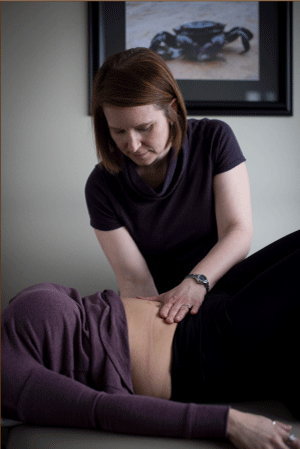Interstitial Cystitis / Painful Bladder Syndrome

Interstitial Cystitis (IC), also known as Painful Bladder Syndrome, is a complex pain condition that involves symptoms of pain, frequency and urgency.
Historically, IC has been viewed as a problem with the bladder and treatment has focussed exclusively on the bladder. However, there is recent compelling research that has cast doubt on whether IC is actually a problem of the bladder in isolation. In many women who are diagnosed with IC, the pelvic and hip muscles can be involved. The pain is felt in the bladder, but in some cases may be due to tight muscles in the pelvic floor!
Another reason to question whether the bladder is the only problem in patients with IC is that there have been cases where patients have had their bladders removed because of their level of pain. In some of these cases, bladder removal did not reduce the pain and instead created new and different problems.
IC can include pelvic floor dysfunction, pain with intercourse, hip and low back pain, bladder pain and symptoms of urgency and frequency. It often co-exists with Irritable Bowel Syndrome, Vulvodynia, Vestibulodynia,
Temporomandibular Joint Dysfunction, Raynaud's syndrome, migraine headaches and/or Fibromyalgia. It is thought that part of the reason for this overlap is due to the development of a sensitive nervous system (a change in the central pain processing mechanisms). This condition is also known as central sensitization; central sensitization is an increased sensitivity of the spinal cord/ subconscious brain to incoming messages. It includes neurochemical changes including inflammation in the nervous system that cause the body to be in a constant state of "red alert." Central sensitization can also cause peripheral edema in some cases.
Sometimes IC is associated with a triggering event - like urinary tract infection, yeast infection, childbirth, surgery or physical or psychological trauma. It is also often associated with stress. The pelvic floor has been found to contract first in response to threatening stimuli in clinical trials, without any conscious awareness of the patient.
Bladder distension with visualized ulceration or inflammation is thought to be indicative of IC; however, studies have shown that many women without bladder problems, who have their bladders filled to capacity under anesthetic, demonstrate similar types of bladder lining irritation and bleeding. There are questions about when these findings are relevant, and why they are perceived so differently by different people (some completely unaware, and others have intense pain).
Though physical therapy is a relatively new treatment for IC, it is gaining traction and respect within the medical community. For example, Dr. Robert Moldwin, a leading American urologist in Interstitial Cystitis, and author of the IC Survival Guide believes that 70-80% of IC patients have pelvic floor muscle problems.
A recent high quality study was published in the Journal of Urology in 2012 which demonstrated that internal pelvic floor myofascial treatment in urological pain patients was effective in 59% of patients compared to generalized massage therapy.
The American Urological Association has developed IC Treatment Guidelines that recommend diet modification and physiotherapy as the first line of defence when a patient presents with painful bladder syndrome.
Check out the American Urological Association's website for more information



